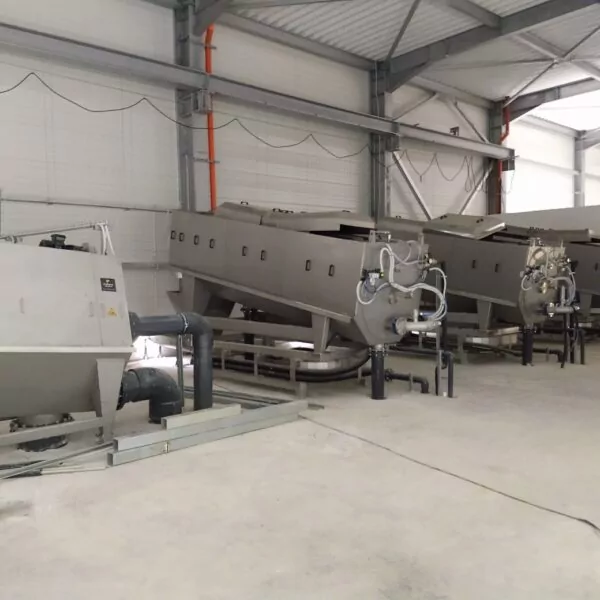Regulatory pressure is intensifying
Across Europe and beyond, environmental regulations have become more rigorous, not only for wastewater but also for sludge itself. National discharge permits increasingly set limits on sludge quality, requiring operators to reduce pollutants like PFAS and colorants.
For example, textile manufacturers that previously discharged colored effluents are now required to meet clarity standards prior to release in the water. And many now refuse to accept sludge that doesn’t meet strict specifications — putting pressure on treatment facilities to optimize processes.
Operational Costs are rising
Disposal and transportation of sludge represent a growing cost burden. With incineration and landfill fees rising, coupled with surging fossil fuel and logistics prices, the cost per ton of untreated sludge is no longer sustainable.
This makes sludge dewatering a strategic lever: removing more water before transport directly reduces weight, volume, and disposal fees. For many operators, investing in efficient dewatering is one of the most effective ways to lower OPEX.
Sludge is getting more complex
Industries today generate increasingly diverse and difficult sludge profiles — from oily, sticky residues in food and fish processing, to plastic-laden sludges from manufacturing. This variability creates technical challenges in dewatering and increases the risk of clogging, poor performance, and high maintenance.
Municipalities deal with more predictable sludge, but often require robust, low-maintenance solutions that can handle continuous operation with minimal intervention.
Sustainability drives are shifting the mindset
More organizations are now treating sludge as a resource, not a waste. Biogas recovery, fertilizer extraction, and carbon footprint reduction targets are reshaping how sludge strategies are defined.
For many industries, sludge management is directly tied to ESG reporting and corporate sustainability goals. Stakeholders want to see reductions in environmental impact — and sludge volumes are now a visible metric.
Sludge management is a Long-Term risk mitigation tool
Delaying investment in sludge treatment can lead to serious consequences — including non-compliance, higher emergency costs, and missed recovery opportunities. As regulations become more localized and customized, the risk of operating with outdated equipment grows.
Choosing the right technology — and more importantly, the right expertise to tailor it to each sludge profile — is now essential.
How NSP by Nijhuis Saur Industries helps operators regain control
The Nijhuis Screw Press (NSP) offers a reliable, energy-efficient alternative to conventional dewatering methods like belt presses or decanters. Designed for both industrial and municipal use, it provides:
- Lower energy consumption than decanter centrifuges
- Small footprint
- Minimal maintenance and easy installation & operation
- with low noise impact
- Customizable configurations based on sludge type and industry
Most importantly, NSI brings decades of expertise in adjusting technologies to suit complex sludge types — from fish fat in Norwegian salmon plants to high-solid content in the food and beverage processing sector. That industry-specific knowledge makes the difference.
Conclusion
Sludge management is no longer just a back-end task. It’s a strategic decision point that touches regulation, cost, sustainability, and long-term risk. Whether in a factory or a municipal plant, selecting the right dewatering strategy and partner can unlock significant operational and environmental value.
For those rethinking their sludge approach, NSP offers both the technology and the expertise to turn today’s challenge into tomorrow’s opportunity.
Discover our different types of solution

- Industrial
- Municipal
Sludge treatment
- Sludge